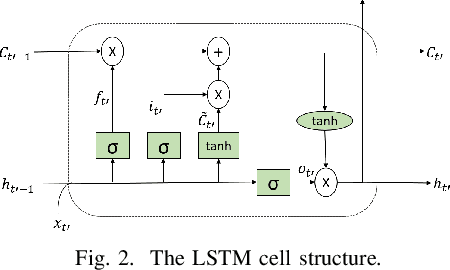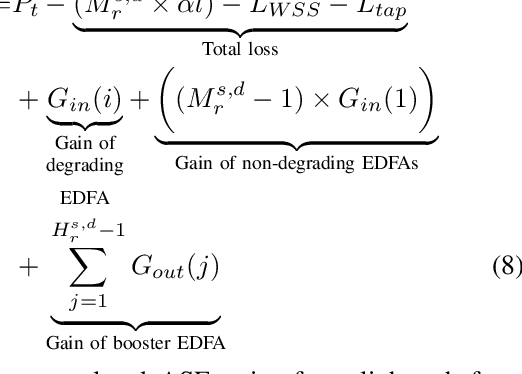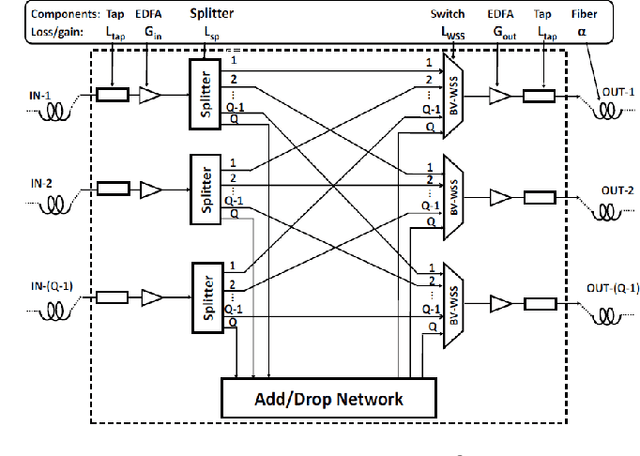Sadananda Behera
A Lightweight QoS-Aware Resource Allocation Method for NR-V2X Networks
Nov 08, 2024



Abstract:Vehicle-to-Everything (V2X) communication, which includes Vehicle-to-Infrastructure (V2I), Vehicle-to-Vehicle (V2V), and Vehicle-to-Pedestrian (V2P) networks, is gaining significant attention due to the rise of connected and autonomous vehicles. V2X systems require diverse Quality of Service (QoS) provisions, with V2V communication demanding stricter latency and reliability compared to V2I. The 5G New Radio-V2X (NR-V2X) standard addresses these needs using multi-numerology Orthogonal Frequency Division Multiple Access (OFDMA), which allows for flexible allocation of radio resources. However, V2I and V2V users sharing the same radio resources leads to interference, necessitating efficient power and resource allocation. In this work, we propose a novel resource allocation and sharing algorithm for 5G-based V2X systems. Our approach first groups Resource Blocks (RBs) into Resource Chunks (RCs) and allocates them to V2I users using the Gale-Shapley stable matching algorithm. Power is then allocated to RCs to facilitate efficient resource sharing between V2I and V2V users through a bisection search method. Finally, the Gale-Shapley algorithm is used to pair V2I and V2V users, maintaining low computational complexity while ensuring high performance. Simulation results demonstrate that our proposed Gale-Shapley Resource Allocation with Gale-Shapley Sharing (GSRAGS) achieves competitive performance with lower complexity compared to existing works while effectively meeting the QoS demands of V2X communication systems.
Machine Learning for Real-Time Anomaly Detection in Optical Networks
Jun 19, 2023


Abstract:This work proposes a real-time anomaly detection scheme that leverages the multi-step ahead prediction capabilities of encoder-decoder (ED) deep learning models with recurrent units. Specifically, an encoder-decoder is used to model soft-failure evolution over a long future horizon (i.e., for several days ahead) by analyzing past quality-of-transmission (QoT) observations. This information is subsequently used for real-time anomaly detection (e.g., of attack incidents), as the knowledge of how the QoT is expected to evolve allows capturing unexpected network behavior. Specifically, for anomaly detection, a statistical hypothesis testing scheme is used, alleviating the limitations of supervised (SL) and unsupervised learning (UL) schemes, usually applied for this purpose. Indicatively, the proposed scheme eliminates the need for labeled anomalies, required when SL is applied, and the need for on-line analyzing entire datasets to identify abnormal instances (i.e., UL). Overall, it is shown that by utilizing QoT evolution information, the proposed approach can effectively detect abnormal deviations in real-time. Importantly, it is shown that the information concerning soft-failure evolution (i.e., QoT predictions) is essential to accurately detect anomalies.
Modeling Soft-Failure Evolution for Triggering Timely Repair with Low QoT Margins
Aug 30, 2022



Abstract:In this work, the capabilities of an encoder-decoder learning framework are leveraged to predict soft-failure evolution over a long future horizon. This enables the triggering of timely repair actions with low quality-of-transmission (QoT) margins before a costly hard-failure occurs, ultimately reducing the frequency of repair actions and associated operational expenses. Specifically, it is shown that the proposed scheme is capable of triggering a repair action several days prior to the expected day of a hard-failure, contrary to soft-failure detection schemes utilizing rule-based fixed QoT margins, that may lead either to premature repair actions (i.e., several months before the event of a hard-failure) or to repair actions that are taken too late (i.e., after the hard failure has occurred). Both frameworks are evaluated and compared for a lightpath established in an elastic optical network, where soft-failure evolution can be modeled by analyzing bit-error-rate information monitored at the coherent receivers.
 Add to Chrome
Add to Chrome Add to Firefox
Add to Firefox Add to Edge
Add to Edge